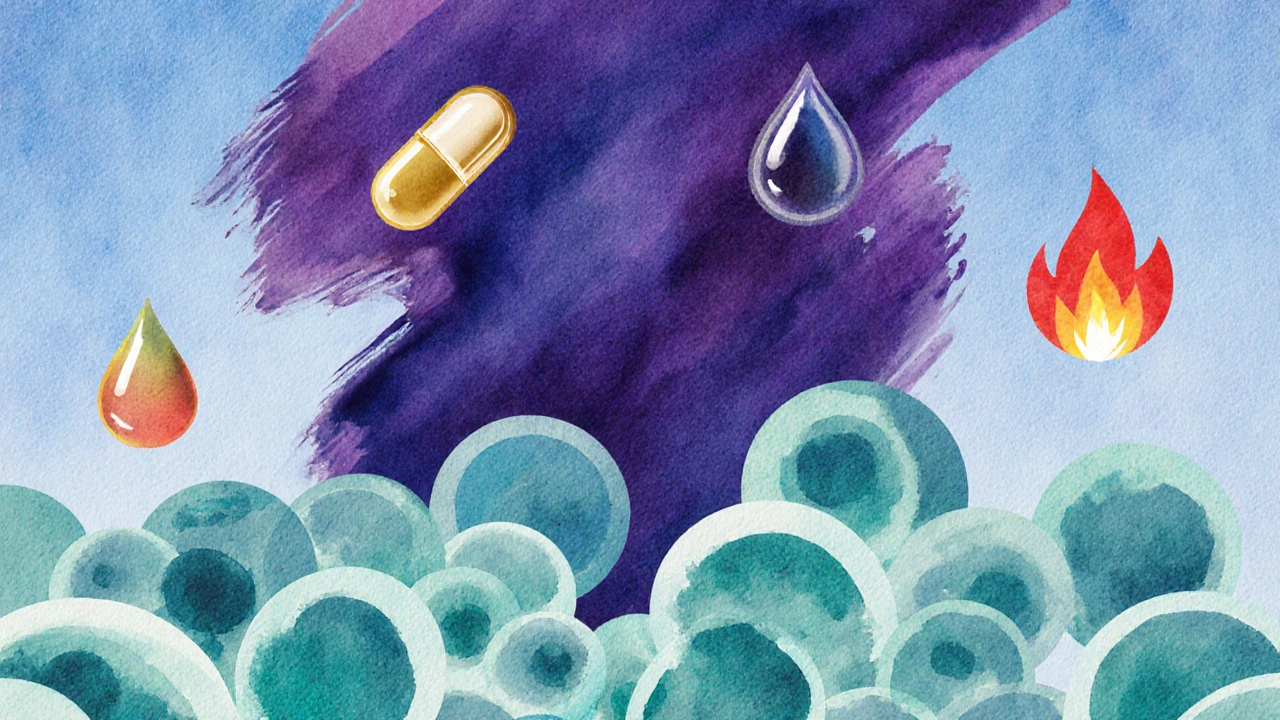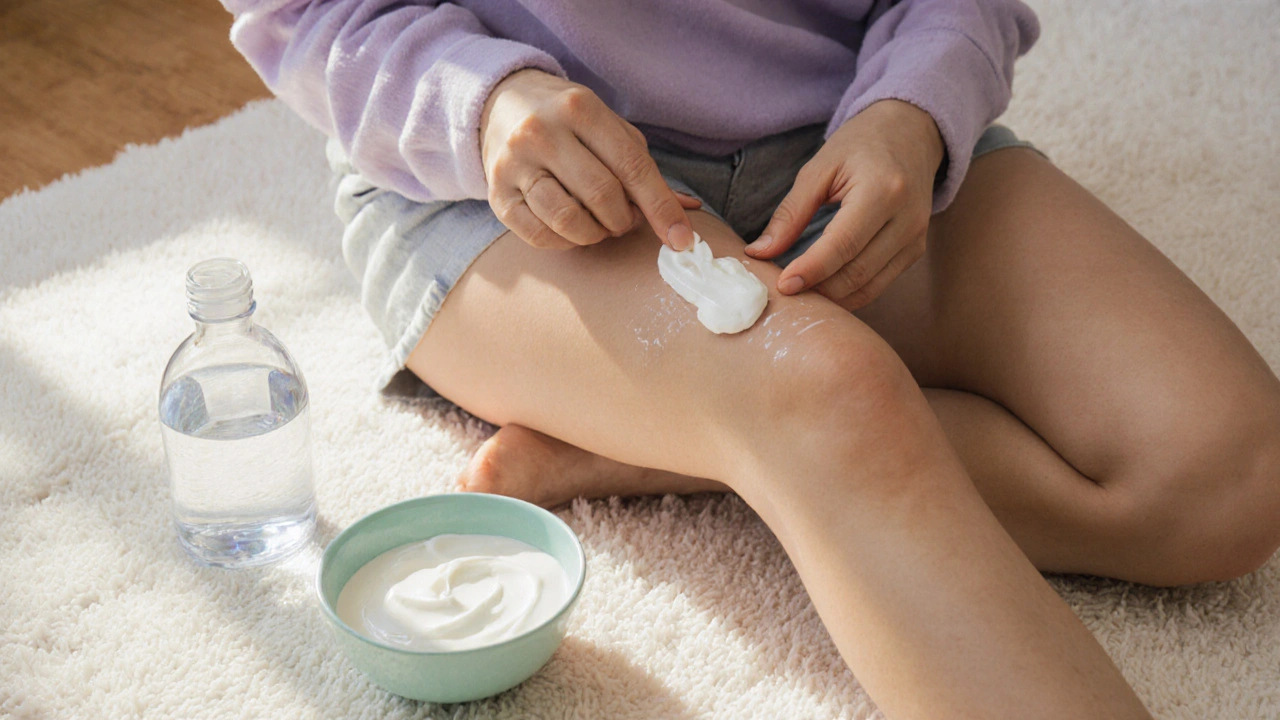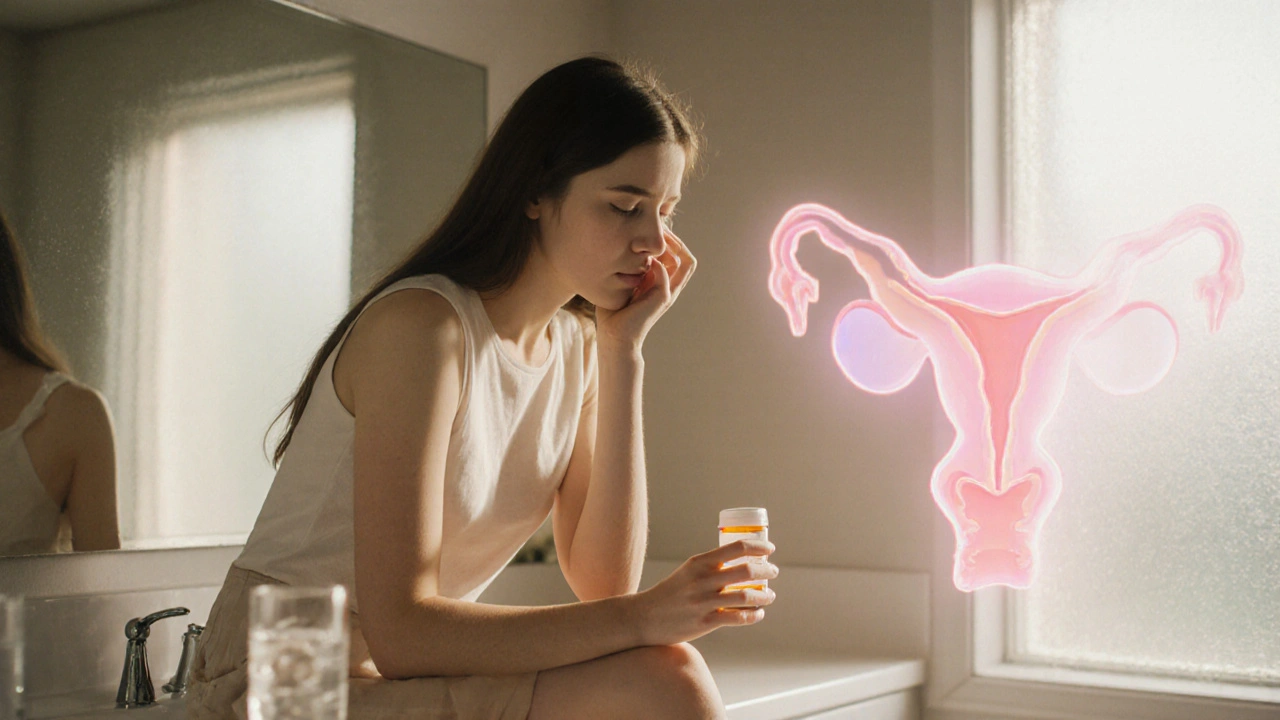Medication-Induced Vaginal Irritation Risk Checker
Your Risk Assessment Will Appear Here
Enter your information and click "Check My Risk Level" to see personalized insights.
Ever wondered why a new prescription seems to bring on vaginal irritation? You’re not alone. Many women notice itching, burning, or unusual discharge after starting a medication, and the link is often overlooked. This guide explains which drugs are most likely to cause irritation, how the reactions happen, and what you can do to stay comfortable while still getting the treatment you need.
What Is Vaginal Irritation?
Vaginal irritation is a condition characterized by itching, burning, redness, or swelling of the vaginal walls and surrounding skin. It can be triggered by changes in pH, inflammation, allergic reactions, or disrupted flora. While occasional irritation is common, persistent symptoms merit a closer look at possible causes, especially medications.
Medications Most Often Linked to Irritation
Research and clinical observations point to several drug classes that regularly appear in reports of vaginal irritation. Below is a quick snapshot of the biggest culprits:
- Antibiotics - especially broad‑spectrum types like tetracyclines and fluoroquinolones.
- Hormonal contraceptives - oral pills, patches, and some intrauterine devices.
- Antifungal agents - paradoxically, some can cause irritation if used improperly.
- Antihistamines - dry out mucous membranes, leading to discomfort.
- Topical steroids - especially over‑the‑counter creams applied near the vulva.
How the Medications Cause Irritation
Each drug class affects the vaginal environment in a distinct way:
- Disruption of normal flora: Antibiotics wipe out both harmful and beneficial bacteria. The loss of Lactobacillus species can raise vaginal pH, creating a breeding ground for yeast or bacterial overgrowth that feels itchy and sore.
- Hormonal shifts: Estrogen‑containing contraceptives thin the vaginal epithelium, while progestin‑only methods can reduce lubrication. Both changes can make the tissue more sensitive to irritation.
- Drying effect: Antihistamines block histamine receptors throughout the body, reducing secretions. Less vaginal moisture translates to friction and rawness.
- Allergic or irritant reaction: Some ingredients, such as preservatives in topical steroids or fillers in pills, act as allergens, prompting an immune response that looks like redness and itching.

Spotting the Difference: Medication Side Effect vs. Infection
It’s easy to mistake a drug‑related side effect for a yeast infection or bacterial vaginosis. Here’s a practical way to tell them apart:
| Feature | Medication‑related irritation | Yeast infection (Candida) | Bacterial vaginosis |
|---|---|---|---|
| Onset | Within days of starting a new drug | Often after antibiotics or high sugar diet | Gradual, may follow douching |
| Discharge | Clear or slightly yellow, no strong odor | Thick, white, "cottage‑cheese" texture | Thin, gray‑white, fishy smell |
| Itching | Moderate, often localized to the vulva | Intense, spreads to inner thighs | Mild or absent |
| Response to antifungals | Little to no improvement | Rapid relief | No effect |
Managing and Preventing Irritation
Below are evidence‑based steps you can take the same day you notice symptoms:
- Review the medication label: Look for known irritants such as lactose, gluten, or specific preservatives. If you spot a potential trigger, discuss alternatives with your prescriber.
- Stay hydrated: Adequate water intake helps maintain mucosal moisture, counteracting drying effects of antihistamines.
- Use probiotics: Oral or vaginal probiotic strains (e.g., Lactobacillus rhamnosus GR‑1) can re‑balance flora after a course of antibiotics.
- Avoid scented products: Perfumed soaps, wipes, and laundry detergents can worsen irritation.
- Apply barrier creams: A thin layer of zinc oxide or petroleum jelly protects the skin from friction.
- Talk to your doctor about dosage: Sometimes a lower dose or a different formulation (e.g., extended‑release versus immediate) reduces side effects without sacrificing efficacy.
When to Seek Medical Help
Self‑care works for mild cases, but you should book an appointment if any of the following occur:
- Symptoms persist beyond two weeks despite measures.
- Severe burning, swelling, or bleeding appears.
- You develop a fever, pelvic pain, or foul‑smelling discharge.
- You're pregnant or planning pregnancy - irritation can affect the vaginal microbiome important for fertility.
Clinicians may recommend a vaginal swab, a medication review, or a short course of a topical steroid to settle inflammation.

Key Takeaways
- Antibiotics, hormonal contraceptives, antihistamines, and some topical steroids are the top medication groups linked to vaginal irritation.
- The irritation often stems from altered pH, reduced moisture, or an allergic response.
- Distinguish side effects from infections by looking at discharge characteristics and response to antifungals.
- Simple measures-hydration, probiotics, avoiding scented products-can alleviate most mild cases.
- Persistent or severe symptoms require professional evaluation to rule out infection or other complications.
Comparison of Common Culprit Medications
| Medication Class | Typical Irritation Mechanism | Prevalence (% of users) | First‑line Management |
|---|---|---|---|
| Broad‑spectrum antibiotics | Flora disruption → pH rise | 15‑30 | Probiotic supplement, avoid douches |
| Combined oral contraceptives | Hormonal shift → decreased lubrication | 10‑20 | Water‑based lubricants, consider progestin‑only |
| Antihistamines | Systemic drying of mucosa | 5‑12 | Increase fluid intake, use vaginal moisturizers |
| Topical steroids (OTC) | Local allergic response | 2‑8 | Switch to fragrance‑free alternatives, short‑term use only |
| Antifungal creams (misused) | Over‑suppression → secondary irritation | 1‑4 | Limit to prescribed duration, consult pharmacist |
Frequently Asked Questions
Can over‑the‑counter pain relievers cause vaginal irritation?
Non‑steroidal anti‑inflammatory drugs (NSAIDs) rarely cause direct vaginal irritation, but they can worsen dryness if you’re already using antihistamines. If you notice itching after starting an NSAID, check for other ingredients such as lactose or dyes that might be the real trigger.
Should I stop my antibiotic if I develop irritation?
Never stop a prescribed antibiotic without discussing it with your doctor. Instead, ask about adding a probiotic or switching to a narrower‑spectrum agent that spares beneficial bacteria.
Are there any natural remedies that actually work?
Coconut oil and plain yogurt (containing live cultures) have modest evidence for soothing mild irritation. Apply a thin layer of coconut oil after washing, or use a yogurt‑based vaginal suppository (after consulting a clinician) to restore Lactobacillus balance.
How long does medication‑induced irritation usually last?
Most side effects ease within 5‑10 days after the body adapts or the medication is discontinued. Persistent symptoms beyond two weeks merit a professional review.
Can hormonal IUDs cause irritation?
Yes, copper IUDs are more often linked to spotting, while levonorgestrel‑releasing IUDs can cause localized dryness or itching in a small subset of users. Switching to a different brand or using a water‑based lubricant usually resolves the issue.

Vinay Keragodi
October 5, 2025 AT 14:27